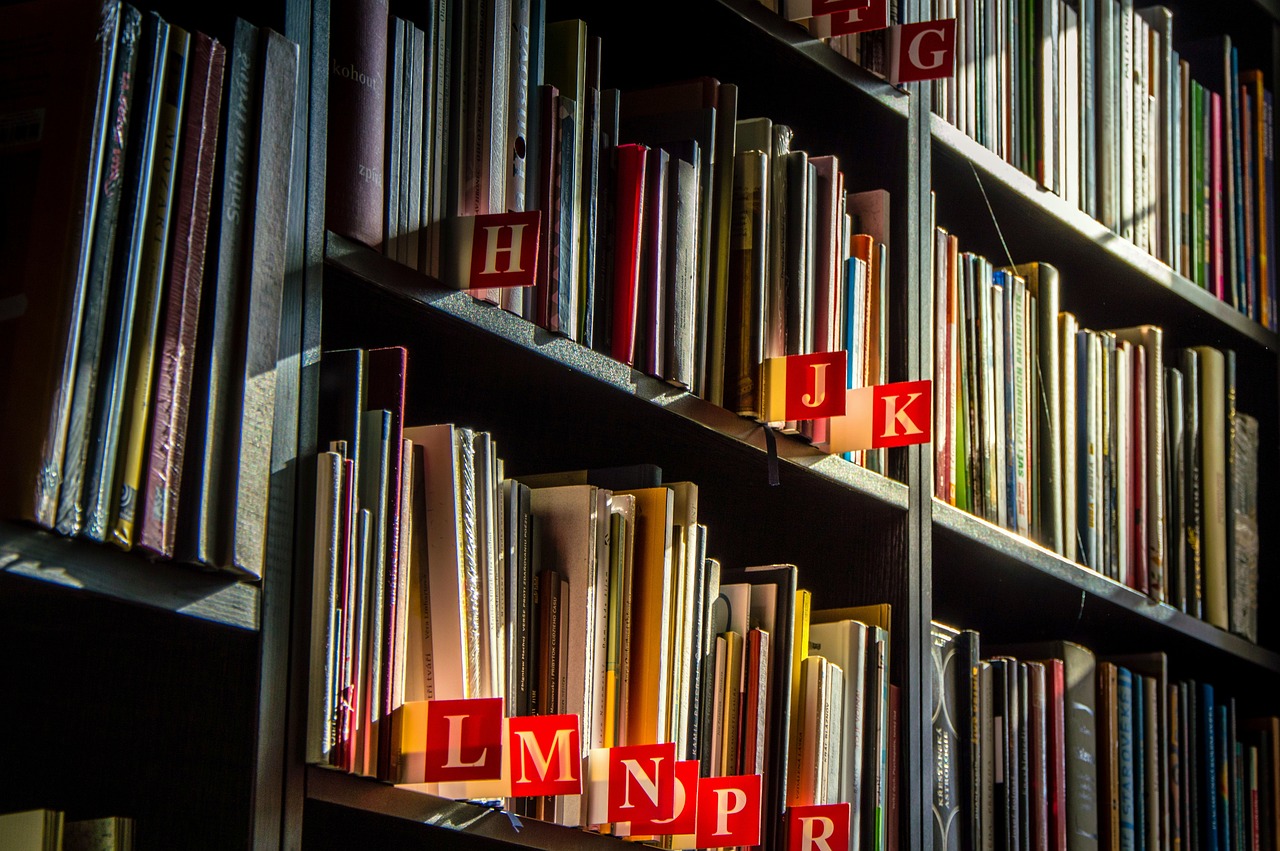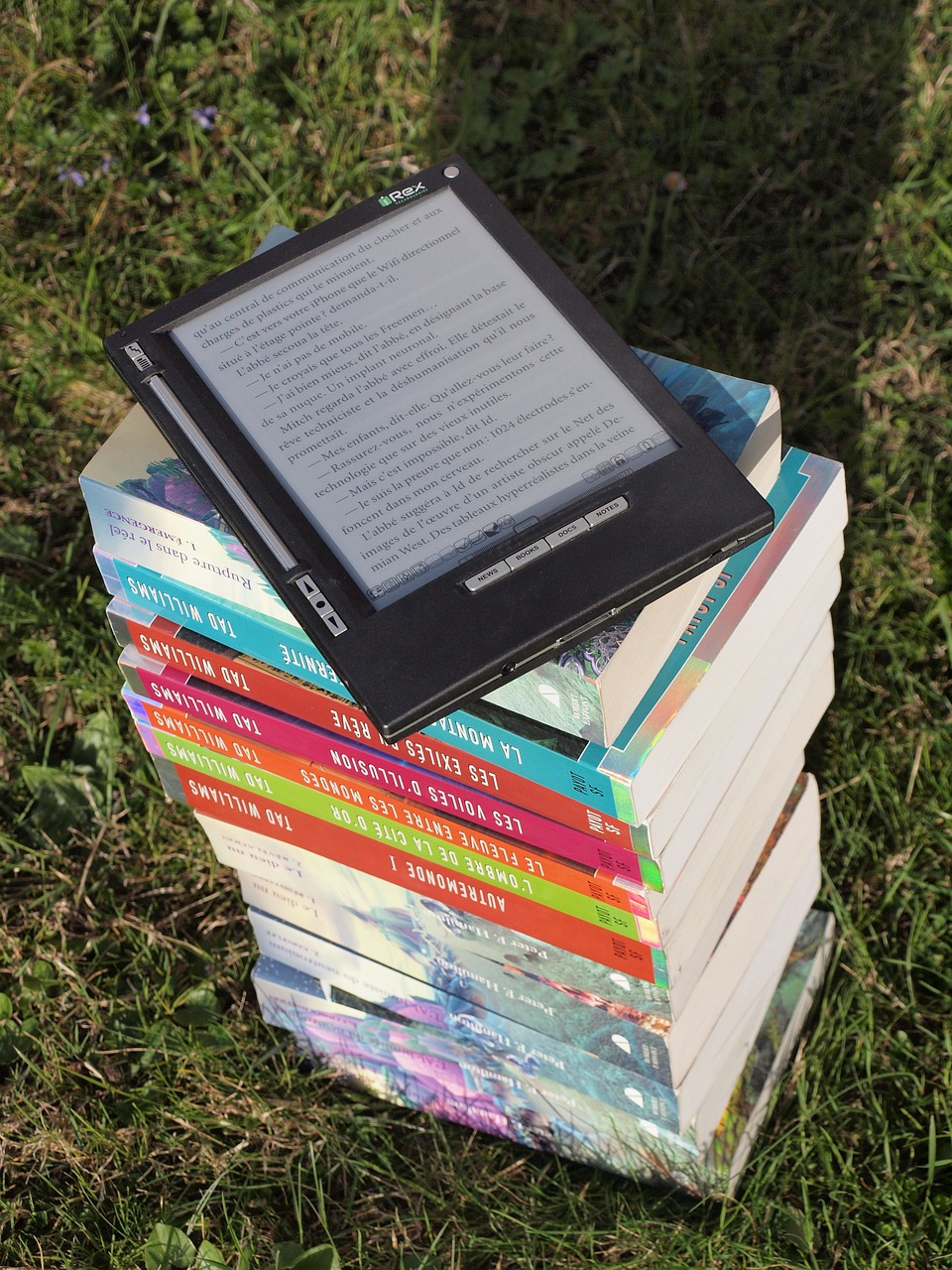When you’re publishing your book, multi-format releases are the best way to go. Offering formats that cover everyone’s needs means you’ll have a bigger readership impact. Let’s dive deeper into book formats.
Book Formats
Your book’s format is basically the type of book it is and the way it is laid out. In order for your book to have a good readership impact, it’s important to be aware of the different formats. There are many different ways of offering formats to customers, but they all fall into two categories:
- Print Books
- Digital Books
We’re going to break each of these categories down further. Multi-format releases are the ideal way to go, but let’s look at each type of format.

Print Books
As far as book formats go, print books are the traditional option. All of us readers love that new book smell, and there’s something special about cracking open a physical, real book. It can be more relaxing to read a print book and easier on the eyes due to not having to stare at a screen for prolonged periods. Enough of our lives revolve around screens, so it’s nice to take a break now and then and just enjoy paper and writing.
But if you’re getting a book published, it’s not as simple as just asking for a print book. There are different varieties (with their own readership Impact). Each type of print book has its own industry standards too.
What we mean by that is that there are required measurements for print books. Because print books have to be, well, printed, the publishers have to have guidelines to work in. Standardization of print books was only brought in in the USA about 100 years ago, in the early 1920’s. Two bodies were brought together to decide on standard sizes for print books. These were the Permanent Conference on Printing and the Committee on the Simplification of Paper Sizes. These committees are the reason we have standard sizes for letters and books.
So basically, in order to ensure books are suitable for printing, they must meet the requirements for things like margins and borders. Otherwise, the text and images could be cut off. We can divide print books into the following different types:
- Hardcover Books
- Paperback Books
- Oversized Books
- Miniature Books
- Photo Books
- Children’s Books
Let’s look further into each of these types:

Hardcover Books
The most traditional of traditional book formats—you’ll be able to recognize these books as being hardbound (as in, having a hardcover). The spine of the book is sewn, and they usually come with a removable dust jacket.
Hardcover books tend to last longer than paperbacks; they are very sturdy and durable. At the same time, they are more expensive to produce and more expensive for the consumer to purchase. Generally, self-published works or books by indie publishers wouldn’t produce hardcover works for this reason.
The industry standard trim size for hardcover books is 6.5×9 inches to 8.5×11 inches.
Paperback Books
Paperback books are the type of books you see with soft paper covers. They are the most common book format for fiction. Paperback books are lighter than hardcover books and easier to carry around. They became popular after World War II. Paperback books have a good readership impact because they are portable, accessible, and generally cheaper than hardcover books.
Paperback books can be further divided into two categories.
- Trade Paperback Books: These are the regular paperback books you see in most bookstores. This is a very common book format with most types of books available in this format. Generally, they are sized at 5×8 inches.
- Mass Market Paperback Books: These are cheaper types of paperbacks. They are common in the adult fiction genre. They are usually smaller than trade paperbacks. Mass-market paperbacks are mass produced and common with adult fiction and romance novels.
Oversized Books
You will have seen oversized books used as decorations. They are the kind of big books people leave on coffee tables. They are often used for images and could include landscapes of architecture or the work of an artist. It’s common for photography collections to be made in this format. Cookbooks can also be made as oversized books to include images.
Usually, these books are 10 inches wide. They are heavy books with a hardcover and a dust jacket (so basically, they are like oversized hardcover books).
Miniature Books
This is the other end of the book format scale in terms of size. They are usually 3 inches but no bigger than 4.
Miniature books would have been used in the past for religious texts. In the modern day, they are often used for joke books or books of quotes. When it comes to the impact on readership, they are used as a novelty that is easy to transport. One potential difficulty with miniature books is that they have smaller print, so it may be hard for some to read.
Photo Books
Photo books are usually large books, but there is no standard size. They are bound so that they can lie flat on a table. The books have to be large because the images have to be clear. They usually feature the work of an artist or photographer.
Children’s Books
Children’s books usually have non-standard formatting to allow them to be fun for kids and possibly include interactive features. There will be illustrations between the text. They are often between 5×8 inches and 10×8 inches.
Digital Books
If you are the kind of person who loves books but has a chronic fear of paper cuts, then digital books are without doubt the way to go. Digital books can be more accessible because you can have multiple books on a single device without the need to carry a physical book around. They have a positive readership impact in this way, as more people can access work if it is available in digital form, as they can just get it online and don’t have to worry about finding a physical copy of the book or getting it delivered. When offering formats for your book, digital is a good option because it reaches a wider audience.
Individual digital books tend to be cheaper than print books because they don’t have to be individually produced. At the same time, it is necessary to have a device to read the books on, which is expensive.
Digital books are on the rise around the world, particularly in Spanish-speaking markets [LINK: SPANISH DIGITAL BOOK PIECE]. Digital books come in two varieties:
- ebooks
- Audiobooks
As we said, to access digital books, you need an electronic device of some kind to read the book, and you have to download the book. Oftentimes, people who read digital books will have a subscription to somewhere where they can download them.
Let’s look at these two types of digital books:
1. Ebooks
When an author is self-publishing for the first time, rather than offering formats in the print book categories, they will stick with ebooks. This is because they are cheaper to produce. These books are designed to be read on a device like a tablet, a mobile phone, or a Kindle reader.
When offering these formats, it’s important to be mindful of the criteria of whatever outlet you are publishing it on. For example, Amazon ebook manuscripts need to have 5 mm of indentation and single-line spacing for Kindle. Different outlets will have different guidelines so read up on them before you format your ebook.
In terms of font, there is no need to worry about this too much, as the reader can adjust the font and font size themselves on their device.
2. Audiobooks
Audiobooks are the most accessible book formats for people with learning disabilities related to reading or for people with visual impairments. They are also very helpful for people who have less time to read. Offering audiobook formats is a good alternative way to reach a new audience. Many people like listening to audiobooks for the same reason they might listen to the radio or a podcast. They can have them on in the background while doing other things. In addition to this, people like to listen to audiobooks while relaxing, and it’s easy to do so because they don’t have to concentrate as much.
Different outlets for audiobooks have different requirements for files. Usually, you will record your audio files in MP3, as that is the best quality. It’s recommended you get a professional narrator to read out your audiobook script, as you need someone with a clear voice who knows how to engage the reader.
[ROOM TO LINK ANY OF THE SEVERAL ORDERS FROM SEPTEMBER THAT RELATE TO AUDIOBOOKS]
Offering Multi-Format Releases for Readership Impact
All the book formats listed above have positive and negative elements. Some may be more suitable than others, depending on the type of book you want to release. While sometimes you will be limited by factors such as time, money, and the availability of service, it’s worth considering offering various formats of your book.
Multi-format releases are a good way to go when possible for a number of reasons. Here’s why:
- Readers have preferred formats (between print books and ebooks or audiobooks). So, offering many different formats will mean more readers have the choice to enjoy your work the way they want to. At the same time, if a book is not available in the format a reader likes, it could mean they just won’t buy it.
- Having more than one format makes your book more accessible. This is especially true for offering audiobooks, as it means people who struggle to read can access the book. As well as having cheaper options available (ebook or paperback rather than hardcover), more people can afford your book.
- You can release your books in more than one format to see which is the most popular way readers consume your work.
Having multiple formats of your book has a positive readership impact, as it means more people can and will choose to access your work.
How to Decide on Your Book Format
Sometimes, it’s not possible to go about offering formats that cover absolutely everyone’s interest. Ideally, you will go about multi-format releases, but you may be limited in your choices for various reasons. So, when considering your book formats, ask yourself the following questions:
- What’s the genre of the book? As we’ve looked at above, different formats are more suitable for different types of books.
- What’s my budget? If money is no object, then you can certainly go for any format you want. But if that’s not the case, paperbacks or ebooks are probably the way to go because they are cheaper.
- How many copies are you looking to produce? If you are only making a few copies, you could possibly splurge on hardcover, but if you are mass publishing, paperback or ebook may be the way to go (ebooks are better for the environment because they don’t require paper or physical production).
- What’s my target audience? Studies have shown that when it comes to reading fiction works, print books are still the preferred method of reading. It’s worth doing some research on how your target audience likes to read books before deciding on what you want to publish.
- What’s my skill set? Do you have or know somebody who could format your book for different types of publishing? If you want an audiobook, can you do the narration, or do you know somebody who can? You may need to get help formatting your book (something we do at TUW), so think about what skills you possess and what help is out there.
There’s no single right or wrong way to format your book. Offering multiple formats is ideal because they please everyone, but if that’s not possible, look at the specifics of the book you are publishing.

Book Formats With Dibbly Create
Dibbly is your all-in-one content creation platform, where you can get everything you need to produce your masterpiece. And with Dibbly Create, you can easily prepare your manuscript for multi-format release. Our Dibbly Create software offers formats that allow you to make your book look professional. So, if you’re anxious about book formats and don’t know where to start, know that formatting for readership impact is one of the many things Dibbly Create offers, and we have a team of freelancers who want to help you.
In Summary
Multi-format releases are the ideal way to get your book out there. Offering many formats means you can have a bigger readership impact. When choosing which book formats to go with, think about the type of book you are producing and what your budget is.














